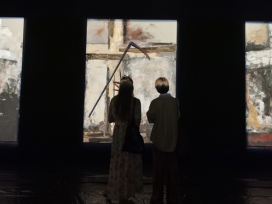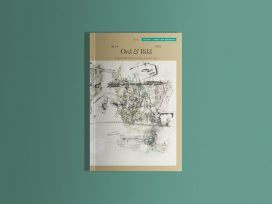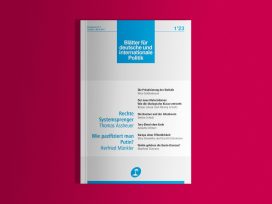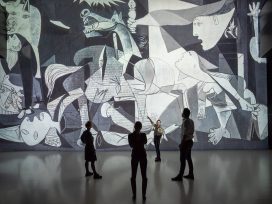Thanks to a Scottish Government initiative, 2009 has been designated Scotland’s year of “Homecoming”: a celebration of everything Scottish to which we are all, apparently, invited. In his introduction to the official Events Guide, Alex Salmond, MSP and First Minister of Scotland, reminds us that this year marks the 250th anniversary of the birth of “our national poet and cultural icon” – Robert Burns. Naturally, this is cause for veneration: “Burns is the inspiration behind our year long celebration of some of Scotland’s great contributions to the world: Golf, Whisky, Great Minds and Innovation, Burns himself and our full culture and heritage.”
While we might ponder the semantic curiosity of Burns being the inspiration for a celebration of himself, more troubling is Salmond’s choice to cite only golf and whisky as Scotland’s crowning achievements, before resorting to the disconcertingly vague “Great Minds and Innovation”, and the transparently floundering “full culture and heritage”. Salmond’s words are, ironically, symptomatic of the reductive and antiquated preconception of contemporary Scotland that he is, presumably, attempting to challenge.
The “Homecoming Scotland” campaign has been widely criticised, and is, in many respects, an easy target. A Guardian blog dismisses the initiative as “an embarrassing attempt” by the Scottish government and its official tourist agency, VisitScotland, to generate revenue from a tourist population “with a taste for the conservative and the clichéd”. Certainly, there is an economic motive for the celebrations; Salmond himself confirmed that his intention was to “spur economic recovery by using Scotland’s assets fully and creatively”. The criticism seems to have been levelled not so much at the former ends, as the latter means: the objection is to the relentless perpetuation of kilt-and- bagpipes imagery, which, certainly, is neither a full nor a creative expression of Scottish identity. It is true, however, that “traditional images of Scotland are… strong in people’s minds abroad” and the fact that the Homecoming campaign has been heavily promoted in Canada, New Zealand and Australia would appear to confirm the existence of a globally dispersed population for whom such symbolism resonates. There are some forty million people worldwide who describe themselves as having Scottish links; to cultivate an impulse amongst the Scottish diaspora to “come home” has the potential to be very lucrative for Scotland’s tourist industry.
Except that the campaign’s marketing strategy betrays a stubbornly narrow sense not only of Scotland’s cultural production, but also of what constitutes an authentically Scottish ethnicity. According to The Times, when the government first announced its plans for Homecoming Scotland in June last year, it “gleefully presented in its publicity material an image of hundreds of happy white-faced ‘heroes’ marching off to celebrate their Scottishness”. Six months later, the image had been conspicuously amended: now, in the front rank of revellers, we see a solitary Asian man, dutifully reading from a collection of Robert Burns’s poetry. Officials claimed that this updated image represents “the diversity of modern Scotland”. Campaigners for racial equality took a rather different view, castigating the change as insulting tokenism. Professor Geoff Palmer, president of the Edinburgh and Lothians Race Relations Council, accused the government of aiming its campaign squarely at wealthy white Americans, and denounced the doctored image as “a deception”.
Palmer’s contempt is understandable, and scandals such as this make easy prey for the media, though generally, discussion of the subject falls short of a thoughtful enquiry into the problems of ethnicity, cultural heritage, and political allegiance in contemporary Scotland. When Salmond writes: “Whether you’re a Scot, you have Scots ancestry or you have a passion for our great nation”, it seems pertinent to consider the demographic to which this appeal is being made, and to question, more broadly, the state of contemporary Scottish identity.
This is, nevertheless, as many sociological studies have confirmed, an extremely complex undertaking, and one benighted with paradoxes, misconceptions, and problems of definition. Robin Williams, in his article, The Sociology of Ethnic Conflicts, asks, “How is ethnicity related to ‘nation’ and ‘nationality’?” Hypothetically, the answer seems straightforward enough: “A nation is a politically conscious ethny, claiming statehood rights on the basis of common ethnicity… Nationalism is an ideological movement in support of a nation.” In practice, however, this definition runs into difficulties. “Since few territorial (national) states are populated by a single ethny, the term ‘nation-state’ is muddled and intellectually dangerous”. This is certainly true in the case of Scotland, as Anthony Cohen has pointed out in Personal Nationalism: A Scottish View of Some Rites, Rights, and Wrongs, 1996:
Scotland is a country of enormous heterogeneity in almost every significant social respect. It is ethnically, linguistically, and religiously plural; its population is dispersed through regions that are geographically disparate… its class divisions are as marked as those of anywhere in the modern world. Anyone’s Scotland can be substantially different from anyone else’s.
This observation foregrounds Cohen’s analysis of nationalism in Scotland, and specifically, “the association that individuals make between themselves and the nation”. The nation is, he suggests, “one of the resources on which individuals draw to formulate their sense of selfhood”, but that “self-identity is misunderstood if regarded as being determined by, or as derived from, membership of the nation”. Furthermore, by neglecting “the personal dimension of nationalism, and by thus understating the agency of the self in the construction of the nation, [we] risk misunderstanding nationalism itself”. Evidently, we are on treacherous ground. But, as Cohen is keen to point out, “the histories, literatures, folklores, traditions, languages, musics, landscapes, and foods of Scotland are social facts on which individuals draw in providing themselves with a shared vocabulary. That is how culture works.” It is in sharing that “the sentiment of and attachment to the nation is predicated”. When put in these terms, we begin to see why Alex Salmond is obliged to construct a picture of Scotland that relies on such tired stereotypes. Cohen again:
The nationalist politician… like any aspiring leader, has to recruit the sympathies of the largest possible number of people by talking to them in terms with which they can all identify. The political nationalist “collectivises” nationalism, while the individual personalises it.
Salmond is undoubtedly attempting to “collectivise” nationalism, to incite, even, a nationalistic fervour, and hoping, presumably, to exploit the ideology of a “putative Scottishness [that] seems to be compelling in contemporary Scotland”. And indeed, beyond. In October last year, Edinburgh University opened a centre for the study of the Scottish diaspora, a department which seeks to investigate the international fascination with Scotland, a “generally white phenomenon” that is becoming increasingly popular in Germany and Eastern Europe where Highland games and Scottish clubs are reportedly flourishing. This research points to the problem of defining an “authentic” national identity, and goes some way to explaining why the terms “blood Scots” and “heart Scots”, as used in the Homecoming literature, have caused both confusion and offence. More problematic still is the tendency for a national allegiance to be formulated in antagonistic terms: that is, for Scottish national identity to be driven by a sense of hostility or opposition to England. This is a problem not only with the construction of Scottish identity, of course, but for the very concept of national identity; it has been argued that all identity is contrastive, that indeed, “this is its very rationale”. Julian Pitt-Rivers, in his 1954 anthropological study of Europe, claimed that it is closest neighbours who most cherish and exploit their differences from each other. Another study concurs:
While the foundations for nationalist sentiment throughout the world are varied, in Europe the basis has been the boundaries of the nations which gained independent political status in medieval Christendom… In Europe, the normal basis for nationalism is, therefore, in a sense always backward-looking, always advertising to past glories, always apparently more conscious of the past than of the present. (H.M. Begg and J.A. Stewart, The Nationalist Movement in Scotland, 1971)
It follows then that the boundary between Scotland and England should have proved so crucial in the provisioning of Scottish – and English – identities; furthermore, that contemporary political rhetoric should invoke an anachronistic national self-image. And because national identity is “never so secure and so lacking in ambiguity and ambivalence that is can be left to look after itself,” we find it “ritualised, mythified, symbolised, and emblematised” (Cohen).
For Scotland, this process seems to have begun with the Union with the English Crown in 1603, followed by the Union of the Parliaments a century later (in 1707), which created the new legal entity of Great Britain. There followed a period of intense socio-economic change: two hundred years of unparalleled prosperity for Scotland, which was largely attributed to the Union, and which for some historians, essentially marked the start of Scottish history because it “represented the beginnings of material progress for the Scots (and therefore of the cultural and intellectual achievements of the Scottish Enlightenment) and the true origins of the creation of nineteenth-century Greater Britain.” (MacKenzie, Empire and National Identities: The Case of Scotland, 1998). If imperialism brought this Greater Britain to fruition, it also helped to establish the terms on which national identities are self-formulated. Inherent is a sense of cultural superiority, which MacKenzie sees as being “forged out of a reading of history upwards into the realm of myth”.
Scotland’s trajectory of mythification owes much to the “discovery”, in the 1760s, of what was claimed as the “ancient poetry” of a third-century Highland bard named Ossian. Colin Kidd writes:
The Ossianic phenomenon did not seriously disturb the ideological trends engendered by the Scottish Enlightenment; indeed it may have reinforced them. For although the ancient Celtic heroes of the Ossianic poems had many “refined” qualities, fine feelings and noble sentiments, combined with cultural simplicity, and heroic ferocity in war, were the hallmarks of savagery. Thus Scottish Gaels… contributed very little of substance to Scottish identity after the eighteenth century. (Gaelic Antiquity and National Identity in Enlightenment Ireland and Scotland, 1994)
Gaeldom had once enjoyed a privileged role in Scottish political culture; an identity associated with the dark-age kingdom of Dalriada consolidated as Scots between the tenth and thirteenth centuries people of Pictish, British, Saxon, Norman, Breton, and Flemish descent, as well as the Dalriadic Scots themselves. Not only was this Dalriadic history the basis of national claims to be a sovereign imperium independent of the English, religious identity too depended on the Gaelic past, and especially on tales of the mythical Dalriadic king, Donald I. The Dalriadic imagination, however, coexisted in Scotland from the later medieval period with a Lowland critique of Gaelic life and manners, especially of the lawlessness of the Highland clans, though not until the eighteenth century was this practical antipathy towards Gaeldom matched by a rejection of the nation’s proud Dalriadic past. Then, according to Kidd:
Scotland’s Celtic identity was dealt a series of intellectual blows from which it never fully recovered… In the works of Scotland’s enlightened historical sociologists… the values of her Highland Gaelic culture came to be detached from any special national or ethnic significance, and instead reinterpreted within a temporal framework of human civilization as symptoms of social backwardness.
As far as the literati of Scotland’s improving Lowlands were concerned, the Highlands were an embarrassing anachronism; the past, they argued, was a foreign country; “the mental world of primitive man, including one’s own ethnic and national forebears… were far removed conceptually from the concerns of civilized, commercial modernity”. Modernity, thus conceived, is contingent upon a selective reading of history. Enlightened Scots, by minimising ethnic differences in institutions and cultural life, were able to distance themselves emotionally from Scottish Gaeldom as from any primitive society, so that the reinvented Highland culture that emerged in the nineteenth century was but a “tame accessory to British unionism and imperialism [which] did nothing to restore to Scots a powerful ethno-cultural identity” (Kidd). Murray Pittock, in The Invention of Scotland, concurs, seeing “the romantic signs and symbols” of this Highland culture as key elements in the “reconciliation of Scottish ethnic nationalism with its global stage” (MacKenzie). But the imperial interaction was also bound up with the securely Lowland Burns tradition and the effort to construct Scottish heroes that combined in their persons both Highland and Lowland characteristics. The problem of Scotland’s diverse (and coexisting) cultures could therefore be resolved by contriving an amalgam of elements – as neatly represented by the Burns societies, Highland games, and St Andrews organisations that sprang up around the Empire and persevere to this day.
On 25 January this year, some 1,030 Burns Clubs with 80,000 members in eighteen countries paid tribute to the Bard’s anniversary; the sheer scale of the “Burns Supper” ritual is a testament to his enduring status as Scotland’s “cultural icon”. The persistence of Burns is curious – though it is perhaps appropriate that he should represent a nation whose history, like his own, has been sanitised, mythologised, and sometimes, outright fabricated. As Neal Ascherson observes in a recent article in the London Review of Books, Burns enthusiasts have, over the past two centuries, found themselves compelled to “invent him and reinvent him in one imaginative hagiogram after another”. Distortion of the truth seems permissible, inevitable even, when facts are scarce (or, just as often, contradictory), for in the telling the story of Burns, “confession that one has no idea why Burns did this or that, or what he thought about him or her, has seemed almost disloyal to the Immortal Memory”. So we have been subjected to “a procession of biographers dressing their own Burns dolls in their own favourite costumes”.
Robert Burns lived a short, passionate and erratic life, and his behaviour seems often inexplicable. How is it that a staunch advocate of equality and liberty, and author of “The Slave’s Lament”, could have considered, at one point, travelling to Jamaica to become a slave-driver? Or that he could mourn the loss of Scottish independence, while praising the British Constitution? It seems, as Ascherson puts it, that from time to time, “Burns stuffed his principles into the drawer along with some of his best poems”. These inconsistencies are ignored for contemporary purposes of deification; rather, Alex Salmond reminds us that Burn’s “message of friendship, Auld Lang Syne, lives on the world over”.
There is an interesting parallel here to the conventional telling of Scottish history, from which unsavoury details are often omitted – including Scotland’s involvement with slavery – or common misconceptions perpetuated, such as the belief that Scotland was conquered by England. The process of “mythification”, of which the Homecoming celebrations are yet another proponent, has worryingly conservative implications. We should perhaps see 2009 not as cause for celebration of predictable Scottish platitudes, but as an opportunity to engage productively with the cultural diversity that has always been central to Scotland’s history, and that exists to this day.






